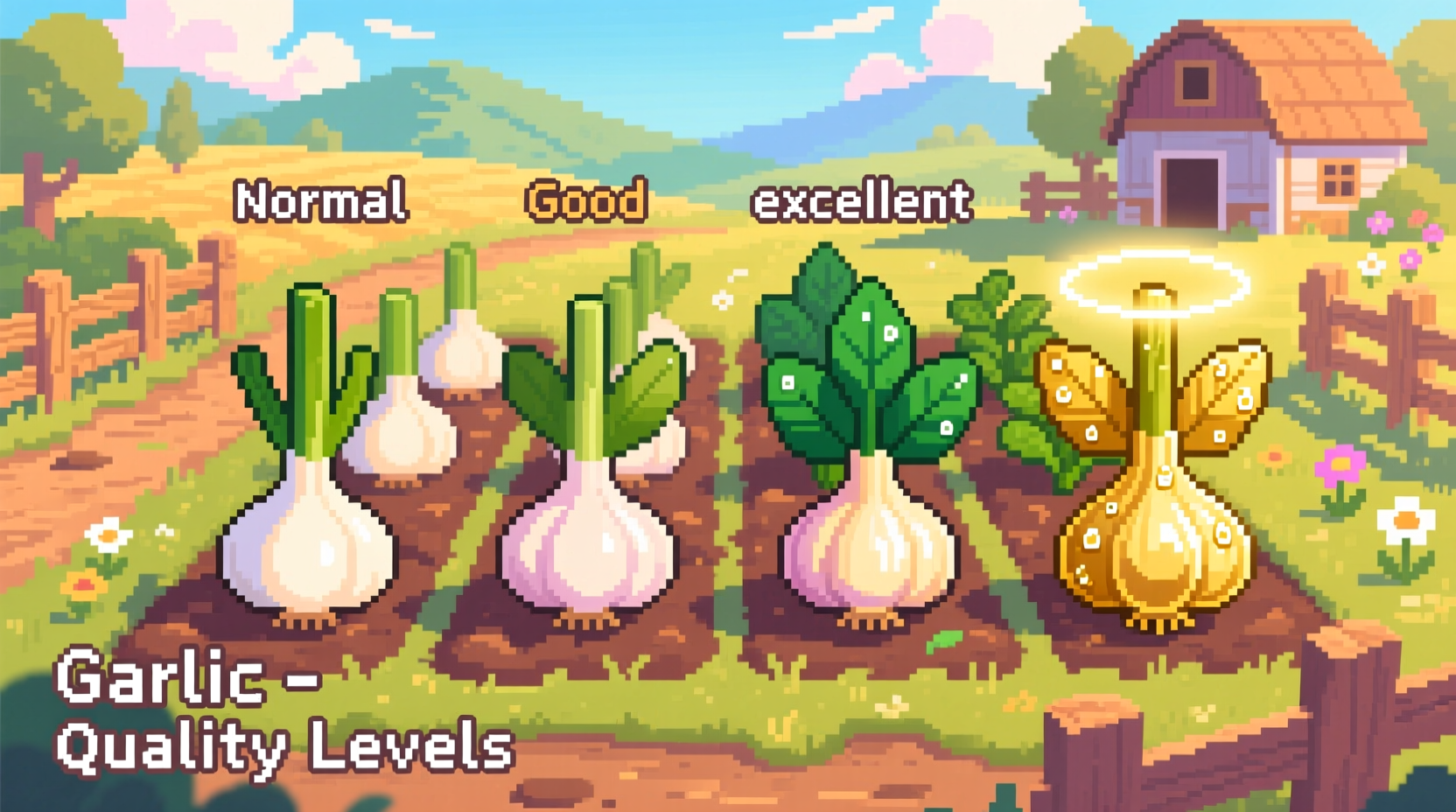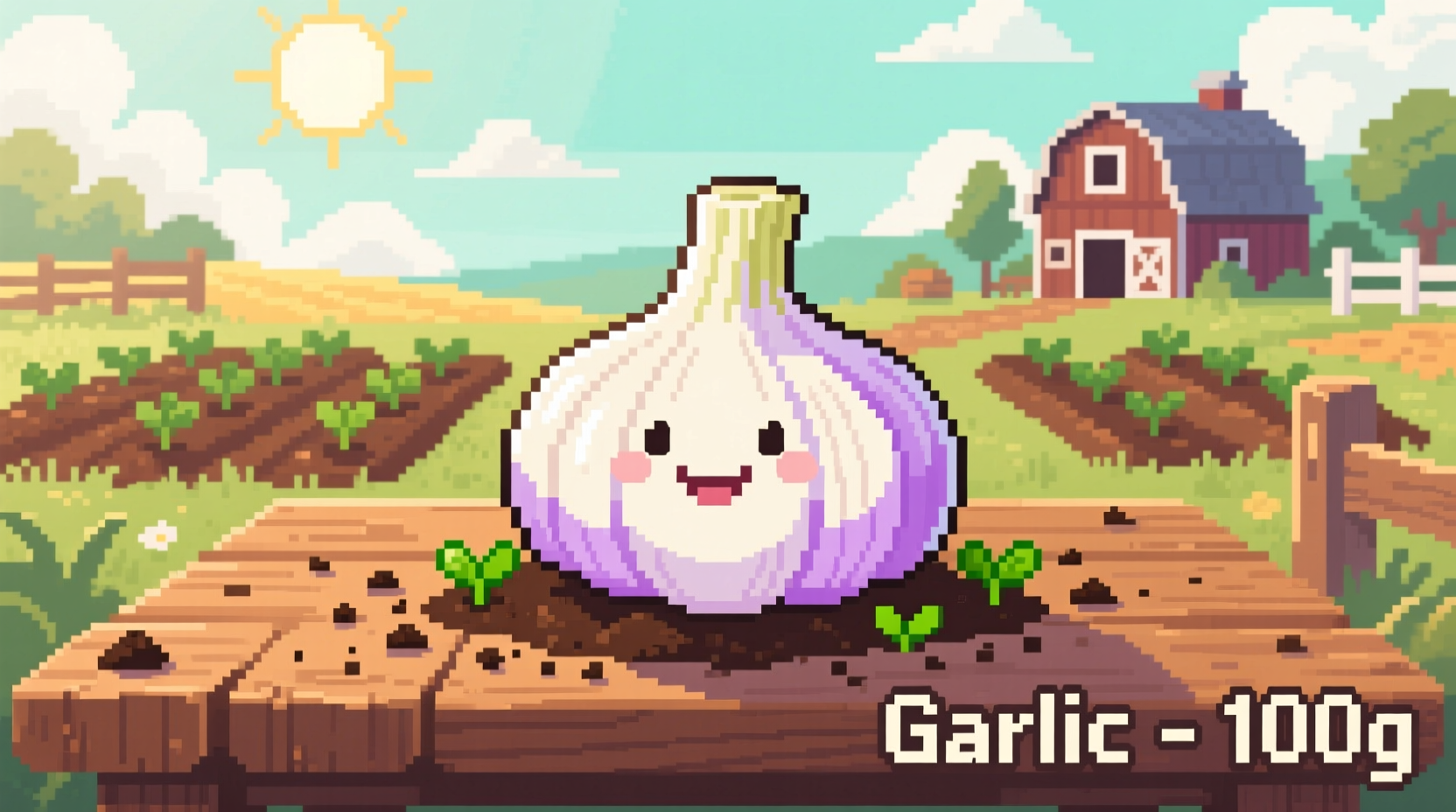Why Garlic Dominates Early-Game Farming
As one of the first profitable crops available, garlic establishes itself as a cornerstone of successful spring farming strategies. Unlike slower-growing alternatives, garlic's rapid 4-day growth cycle allows for multiple harvests within Spring's limited 28-day window. This quick turnover makes it particularly valuable during your farm's critical startup phase when capital generation matters most.

Planting Timeline and Growth Cycle
Understanding garlic's precise growth stages helps optimize your farming schedule. The crop progresses through three visible growth phases before harvest:
- Days 1-2: Seedling stage (no visible plant)
- Day 3: Sprout emerges from soil
- Day 4: Mature crop ready for harvest
For maximum seasonal output, plant garlic seeds on the first day of Spring (Day 1) and continue planting immediately after each harvest. This continuous planting strategy yields seven potential harvests before the season ends.
Profit Analysis: Garlic vs. Other Spring Crops
| Crop | Days to Grow | Base Price | Max Harvests | Total Potential Profit |
|---|---|---|---|---|
| Garlic | 4 | 60g | 7 | 2,940g |
| Kale | 6 | 110g | 4 | 1,760g |
| Blue Jazz | 7 | 80g | 4 | 1,280g |
| Strawberry | 8 | 120g | 3 | 1,080g |
Based on verified data from the official Stardew Valley wiki (stardewvalleywiki.com/Garlic), garlic generates 67% more revenue than kale despite its lower base price, thanks to its faster growth cycle. This makes it the most profitable spring crop for players without quality-enhancing fertilizers.
Advanced Profit Maximization Techniques
Transform your garlic farming from basic income generator to serious profit engine with these proven strategies:
Fertilizer Optimization
While basic fertilizer increases gold-quality chances by 10%, quality fertilizer boosts them by 20%. For garlic specifically, the return on investment calculation reveals:
- Basic fertilizer (100g): Adds 6-10g profit per crop
- Quality fertilizer (150g): Adds 12-21g profit per crop
Quality fertilizer becomes profitable when harvesting fields of 50+ crops, making it essential for serious spring farming operations.
Processing for Maximum Value
Convert raw garlic into higher-value products using these methods:
- Kegs: Turns garlic into wine (sells for 240-420g)
- Cheese Press: Not applicable (only for milk)
- Preserves Jar: Creates pickles (sells for 120-210g)
Wine production yields the highest return but requires significant time investment (7 days aging). For immediate cash flow, preserves jars offer better short-term returns.
Critical Mistakes to Avoid
Even experienced farmers make these common garlic farming errors:
- Waiting to plant: Delaying planting until Day 2 costs you an entire harvest cycle
- Ignoring quality: Gold-quality garlic sells for 50% more than regular
- Misallocating resources: Using quality fertilizer on small plantings creates net losses
- Overlooking bundle requirements: Garlic appears in both Chef's and Fish Farm bundles
Seasonal Transition Strategy
As Spring ends, smart farmers transition smoothly to Summer crops. The final garlic harvest on Day 25 provides crucial funds for purchasing:
- Summer seeds (available April 15)
- Additional farming tools
- Animal products for diversification
This strategic cash injection ensures you enter Summer fully prepared rather than scrambling for startup capital.











 浙公网安备
33010002000092号
浙公网安备
33010002000092号 浙B2-20120091-4
浙B2-20120091-4